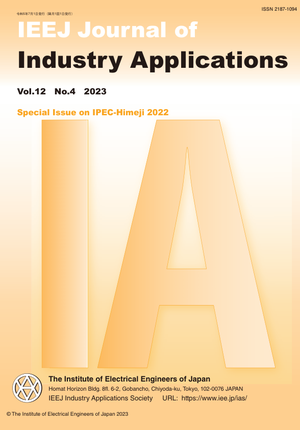Machine-learning-based Prediction of the Three-dimensional (3D) Position Coordinates of 3D Proximity Sensing Frames
Machine-learning-based Prediction of the Three-dimensional (3D) Position Coordinates of 3D Proximity Sensing Frames
カテゴリ: 論文誌(論文単位)
グループ名: 【D】産業応用部門(英文)
発行日: 2023/07/01
タイトル(英語): Machine-learning-based Prediction of the Three-dimensional (3D) Position Coordinates of 3D Proximity Sensing Frames
著者名: Tomoaki Kashiwao (Graduate School of Science and Engineering, Kindai University), Masayuki Hiro (Graduate School of Science and Engineering, Kindai University), Keita Hayashi (Graduate School of Science and Engineering, Kindai University), Mikio Deguchi (
著者名(英語): Tomoaki Kashiwao (Graduate School of Science and Engineering, Kindai University), Masayuki Hiro (Graduate School of Science and Engineering, Kindai University), Keita Hayashi (Graduate School of Science and Engineering, Kindai University), Mikio Deguchi (National Institute of Technology, Niihama College)
キーワード: capacitive proximity sensor,circle detection,hough transform,machine learning,random forest,3D position
要約(英語): This paper reports a prediction method for the three-dimensional (3D) position coordinates of a 3D capacitive proximity sensor consisting of multiple sensing electrodes; this sensor was developed in our previous studies. Notably, the sensor could detect an object nearby; however, obtaining a formula to directly determine the object position from the sensor output was difficult owing to strong non-linearity. Therefore, in this paper, we propose a method of obtaining an approximate formula instead of an accurate formula to estimate the 3D position of objects from sensor outputs using machine learning techniques. The method obtained datasets that were a combination of the sensor outputs and the 3D positions estimated from camera images using an image processing technique. The machine learning models were trained using the obtained training datasets, and the trained models could predict two-dimensional positions from the sensor outputs. The following four conventional machine learning models were used in this study: a multilayer perceptron, radial basis function network, support vector regression, and random forest (RF). RF delivered the best performance in the evaluation based on the root mean square error and coefficient of determination.
本誌: IEEJ Journal of Industry Applications Vol.12 No.4 (2023) Special Issue on “IPEC-Himeji 2022”
本誌掲載ページ: 800-807 p
原稿種別: 論文/英語
電子版へのリンク: https://www.jstage.jst.go.jp/article/ieejjia/12/4/12_22004763/_article/-char/ja/
受取状況を読み込めませんでした


